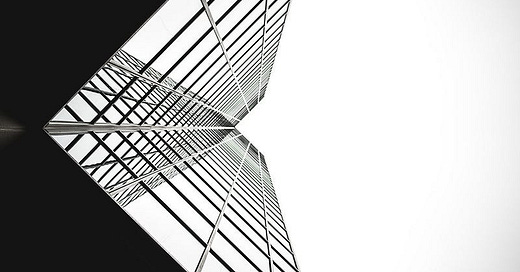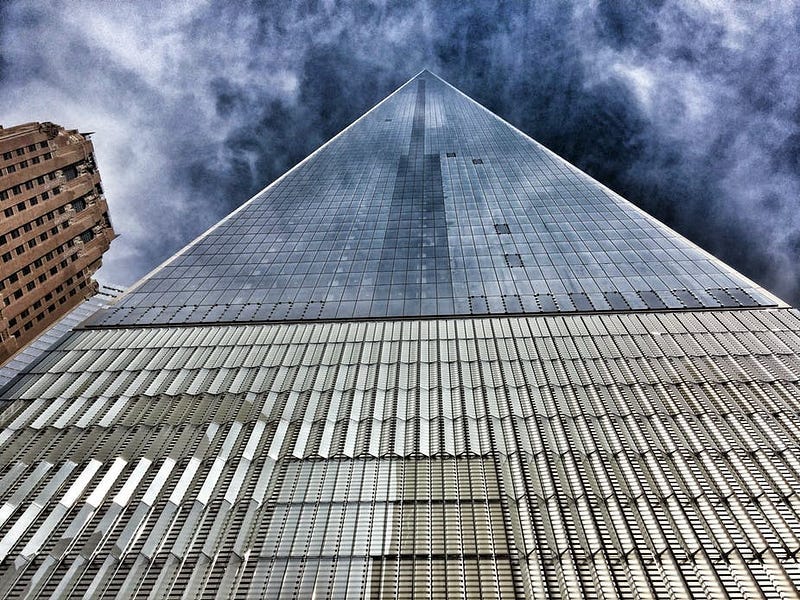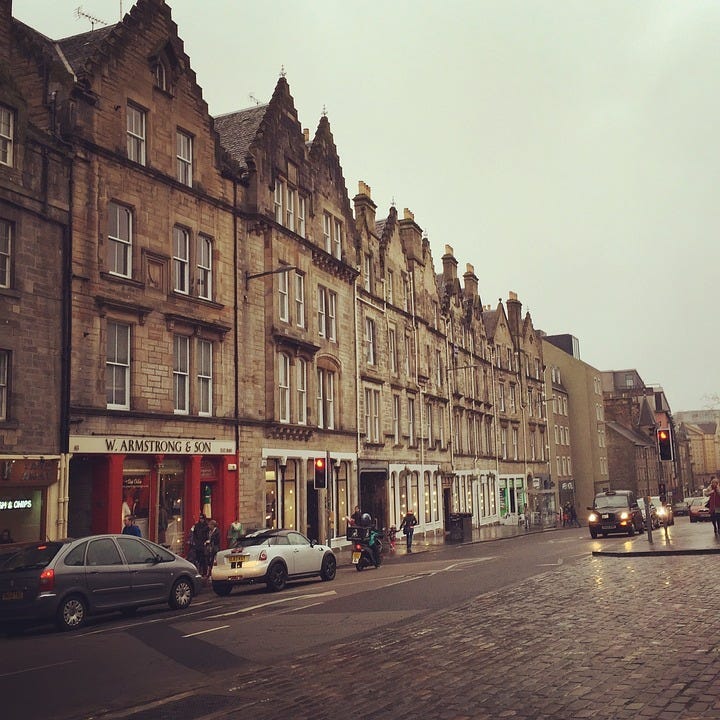Architecture For The Future: A Vision Of The Ideal Sustainable Housing Solution For The Next…
According to reports by the United Nations, by the year 2100, the world’s population will grow to over 11 billion people. That’s 3 billion…
According to reports by the United Nations, by the year 2100, the world’s population will grow to over 11 billion people. That’s 3 billion more people than the planet houses today.
Now, I’m not an architect, but I’m reading up about a bit of architecture for….. let’s just say….. personal reasons.
But you don’t have to be an architect to figure out that housing 3 billion more people than the world houses today requires more space.
To be exact, the figures add up to adding a staggering 2.4 trillion square feet of new built space to house those extra 3 billion people which we need to build in the coming decades.
To put this into scale, that’s like adding to the planet a New York City every month for the next 40 years.
I know, it’s ridiculous.
So how are we going to house all these extra people in a sustainable, carbon-negative way, so that space is used optimally and there’s enough space for a healthy environment, movement & an optimum solution for the communities living there and their energy needs?
When it comes to energy needs, we’re some way off getting clean-energy grids for our existing cities, as Architect Vishaan Chakrabarti explains,
“Now, for our big, existing cities, there is a lot of hope in clean energy grids fueled by renewables like solar, wind, nuclear and geothermal. But the fact is, we are still a ways away from getting fully clean power grids in our existing cities, where most of this population growth is going to occur. And that’s true because of the problems with everything from transmission lines to the politics of nuclear energy. So, clean grids are a really important part of the solution, but they don’t help us that much, right at this moment.”
Towers — Obvious, But Not Sustainable
If you’re thinking, “Well, just build more towers”, it’s the obvious solution, but towers are far from sustainable.
“So maybe you’re thinking the right answer to house our coming building boom are towers. And look, I’ve actually been called “Professor Skyscraper.” I love a great tower. But the reality is we are very far away from developing carbon-negative towers. And the reason is, towers are energy-intensive to build and operate.
They house a lot of people, which is great, but they have very little roof area to effectively use solar, and similarly, like, wind turbines at the top — all of that stuff barely makes a dent. On top of that, most skyscrapers are built out of steel and concrete, which have a very high degree of embodied energy.
Now, I hold out a lot of hope for a technology known as “mass-timber construction,” which would allow us to build tall towers out of environmentally friendly and fire-retardant wood that’s actually a carbon sink, but we are a ways away from widespread adoption of that technology.
I also hold out hope for the idea that windows could harness solar power, but the idea that we have effective and affordable solar glass in the near future, that’s even more nascent than mass timber. So for towers to really be sustainable, we need those clean energy grids that we spoke about, but we don’t have them available to us today.”, says Chakrabarti
The Solution
Chakrabarti suggests that the answer is ‘hidden in plain sight’, what he calls a ‘Goldilocks’ scale and a sort of middle ground, which it turns out is an optimum housing solution.
If you’re unaware of what ‘Goldilocks’ conditions are, you can check an old article of mine called The ‘Big History’ Of The Universe: How We Fit In As A Species In The Cosmic Timeline. ‘Goldilocks’ conditions are basically those that are just right enough or a sweet spot.
So coming back, the idea for the sustainable housing of the future is two or three storied housing which is in between a regular single family home and a large skyscraper.
The idea is to have two or three storied buildings that are interconnected and that can be wide enough so that it can house enough people, think like a small community, and so that its roof area can be used for ideal clean energy solutions.
I believe that the answer is hiding in plain sight, that there is what I call a “Goldilocks” scale that sits between the scale of housing and towers: two- to three-story housing that should actually look very familiar to most of you, because we built the most beloved parts of our cities with it. The row houses of Boston, the hutong districts of Beijing, most of the fabric of Edinburgh.
What we now build in this scale are largely cheap suburban townhomes. They’re banal, they’re not sustainable, they’re not walkable, they’re certainly not beautiful. But could they provide a hint of a framework for a human-scale way of solving this problem that is great for both the climate and our societies.
This Goldilocks framework hits the sweet spot between the number of people it can house and the amount of roof area we need to provide them and their communities [with] power. It can be built out of simple local materials, like wood or brick, both of which have relatively low embodied energy and could be built by local workers. And the solar panels up above could be supplemented with state-of-the-art battery systems that level out solar supply and user demand.
Similarly, we can have electric, state-of-the-art air conditioning and heating systems — this exists today. They can create thermal storage. What that means is it can produce ice or hot water off-peak, for use on-peak. This housing could compost food scraps and solid waste, and turn it into usable soils or protein for animal feed.
And I think, most importantly, this kind of housing could provide affordable, communal, equitable housing for communities in dire need of it. And I work with a lot of these communities, and I know how much demand there is for this out there.
The Advantages Of This Solution
This plan for housing is however, not a permanent one-stop solution but it’s a framework or a template to be built upon. However, the advantages are plenty and significant.
As Chakrabarti says,
“Speaking of communities … I want to emphasize that this is not a one-size-fits-all solution. This is a framework. It’s a template. We can work with communities to make this housing appealing, visually and socially, make it socially and racially mixed, integrated into the lives of existing communities.
And when it’s built into our cities, what it means is that it’s dense enough to support mass transit, like light-rail, express busses, bikes. There are networks that plug into jobs, schools, parks and other daily destinations in our cities.
This housing is compact enough that it leaves room for lots of trees and ground cover. That means that we can lower stormwater impacts; we can reduce the heat island effect; we can lower the demand for air conditioning. And for every family that lives in an apartment like this, it’s one less house destroying farms and forests.”
The analytics and data for this model suggest that this is the lowest-carbon-footprint-per-person solution of housing that’s also sustainable and optimum in terms of land use.
This Solution To Scale
Although this idea seems rather innocuous, it is the best way to efficiently and sustainably house those extra 3 billion people that we’re going to see the world’s population grow to.
“Now, you may be thinking, “So this is his big idea? Small-scale housing, solar panels above, light-rail below, known technologies throughout, all organized into these affordable green neighborhoods?” Even if you believed me that this was carbon-negative, how many of our 11 billion people could this possibly house? It’s such a modest model. Well, it turns out, if all of us lived at this scale, all 11 billion of us would use up a landmass equivalent to the size of France.”
The Need Of Making Housing Carbon Negative
As I’ve mentioned in an older article of mine called Tracking Worldwide Carbon Emissions Using Satellite Imaging & AI Computer Vision Algorithms, climate change is perhaps the biggest threat to our species and life on Earth as we know it.
I’ve also written another piece about how we can Reimagine Capitalism To Solve Climate Change, which outlines other ways of rethinking capitalism at its core to fight climate change.
Climate change is real and we need solutions to tackle it in every aspect of industry, which is why we need to envision housing that is carbon negative.
In his 10 minute TED Talk, architect Vishaan Chakrabarti outlines his ‘Goldilocks’ solution to housing for the future, and how it can help us house the approximated increase in the world’s population in the most sustainable, efficient and ideal way.
If you liked this article, you can buy me a cup of coffee and a couple of cigarettes by clicking the link below!







